Circum Arctic Prespective.
Unstable Ground – Arctic Regeneration & Rewilding
Unstable Ground - the research and design of this project - refers to the questioning of the human role in terms of culture and climate change in the Arctic. The thesis offers a deeper understanding among the perpetually shifting transformations the Arctic population are experiencing, but more broadly it questions the global culture of capitalism and its architecture of exploitation, when it is devaluing important actors such as Indigenous knowledge and nonhuman entities.
The ground (n.) is the solid formation of soil and rock on which terrestrial life is dependent despite its distinction from changing nature. It is the physical entity on which our bodies sense stability or instability within a certain territory. To ground (v.) in something, however, refers to cultures where we can find meaning politically, spiritually or structurally by constructing foundations mentally and/or materially. Ground (adj.), on the other hand, refers to the process of change where something is being fragmented - a fragmentation that can be agreed, disagreed or accepted. The Ground as a natural entity seeks for balance, not to be unstable - an instability that reflects upon who we are, what our culture are and what we have become. Especially, in a time when a process of fragmentation is happening - an unstable ground.
This project tests the forms of ground in relation to our conceived nature and how we act upon societal development demands. By “forms of ground” it means ground as a physical entity, as a cultural construction, as a process of fragmentation. The Arctic is focused to reconcile this conflict through rewilding, yet it is part of a greater whole - that is not isolated to one another - that has strong relations and interconnections within a complex planet.
Studio 10: DISPLACEMENT – The Global Challenge, 22/23
Teaching Team: Amalia Katopodis, Prof. Robert Mull and Sangram Shirke
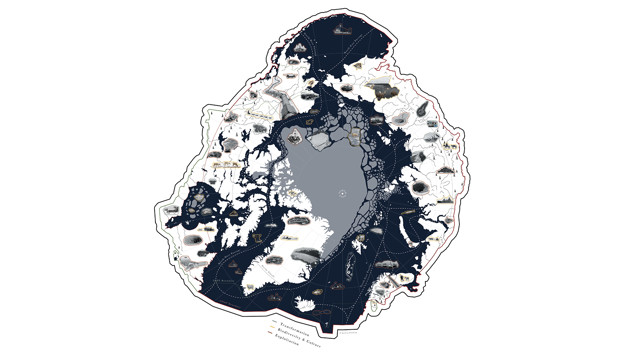
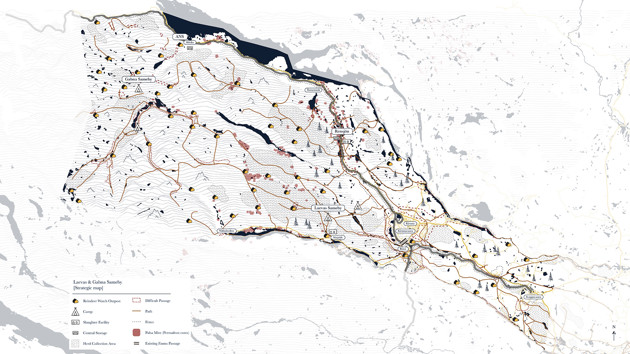
Area of Proposal
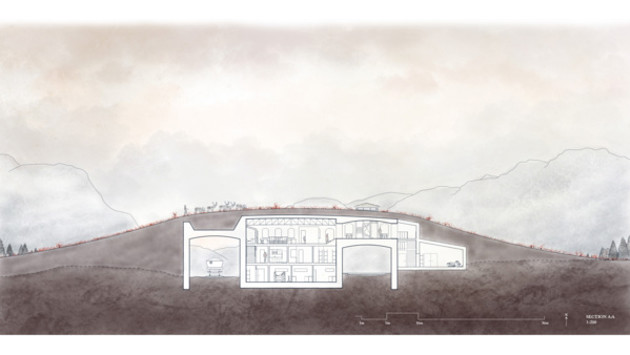
Long section
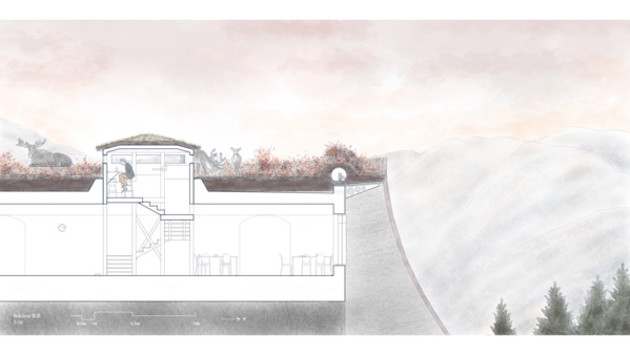
Short section
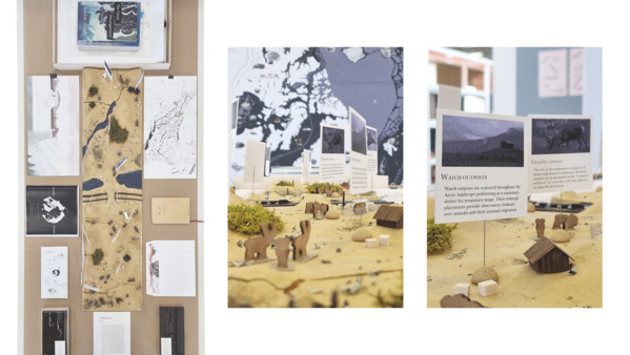
Conceptual Model
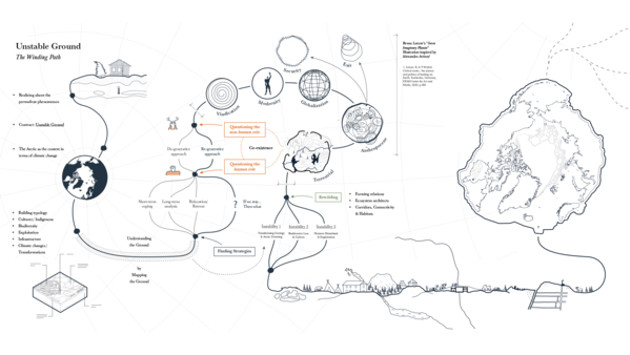
The Winding Path





